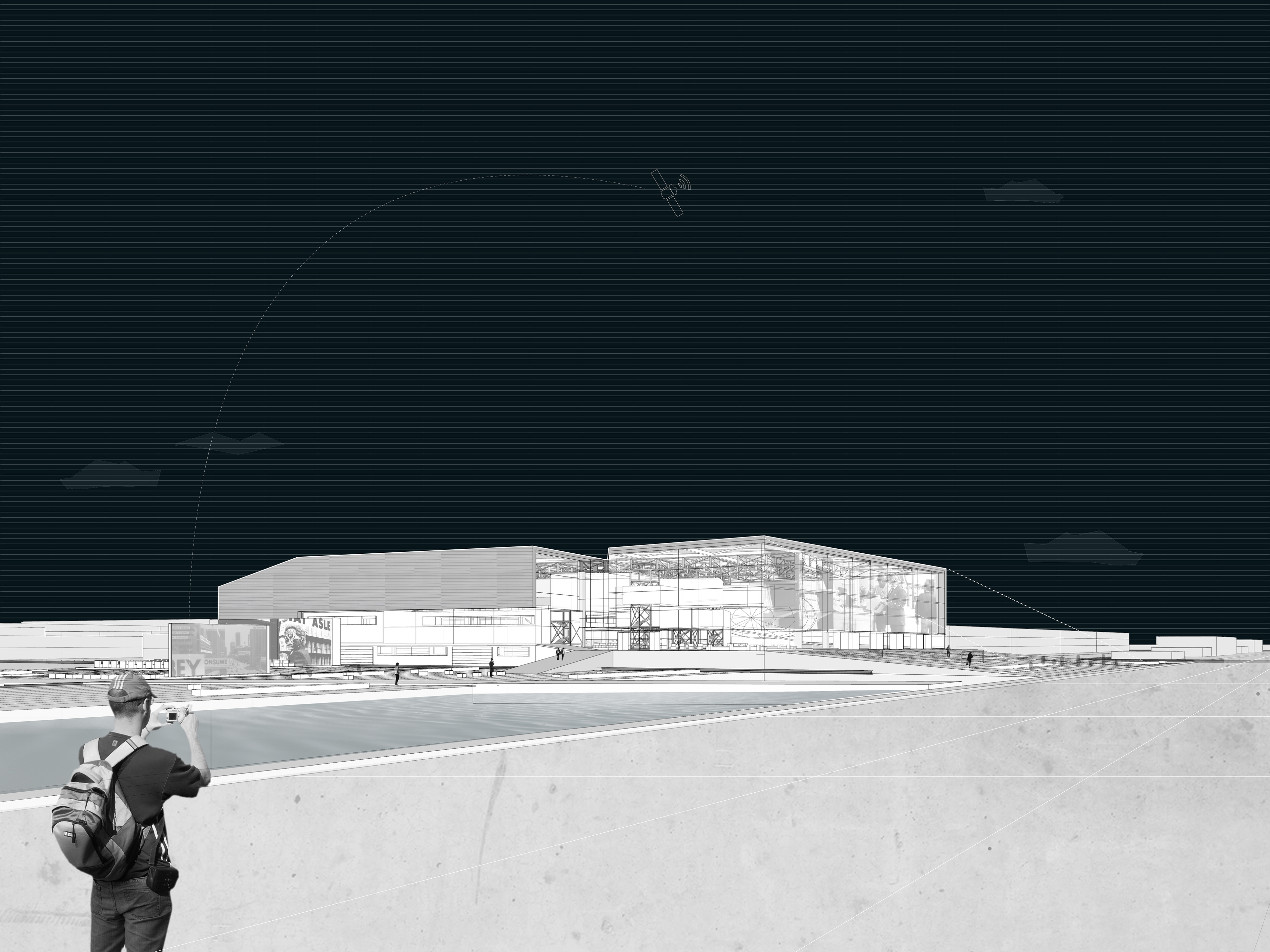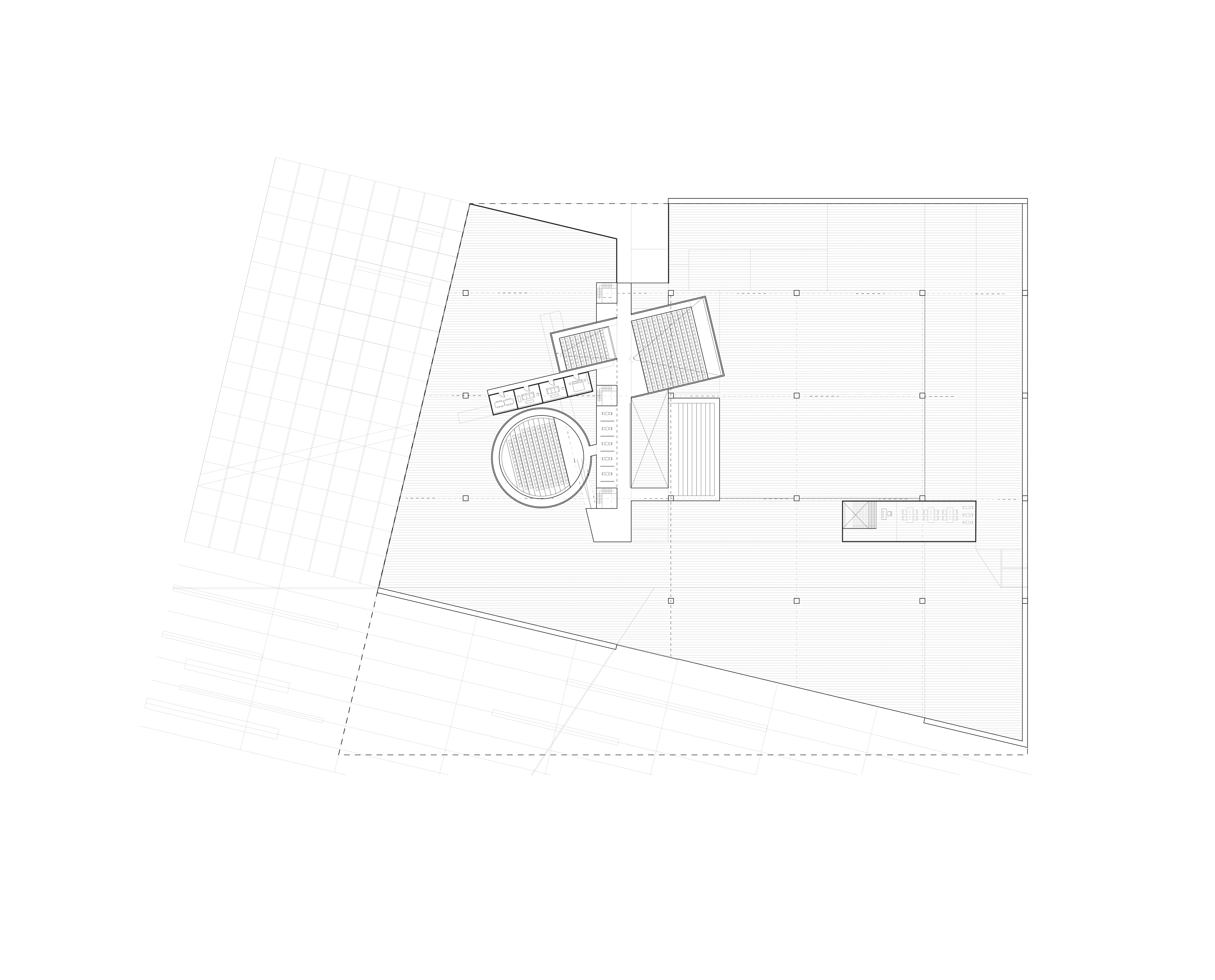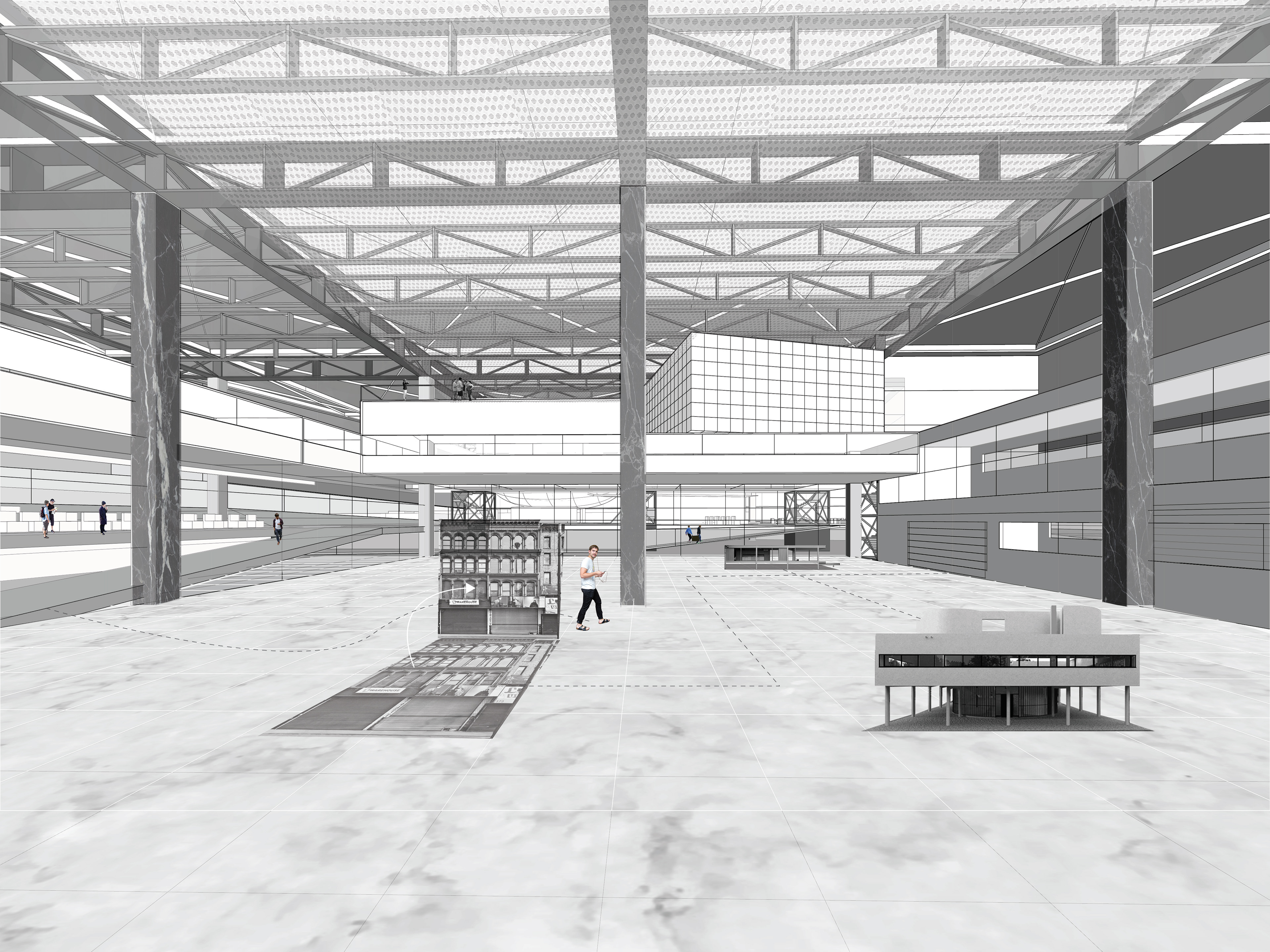Academic / Undergraduate / 3B Studio
Coordinator: Ali Fard
Studio Award + Annual Exhibition 2016
Sept - Dec 2015
Coordinator: Ali Fard
Studio Award + Annual Exhibition 2016
Sept - Dec 2015
The effects factory is a convention center for film located at a key intersection of the Portlands. The convention center is a giant shed with a whole bunch of things inside. It doubles as both a film production facility and as public interface for new film technologies. The giant interior has clusters of programs and spaces organized by rigorous circulation paths determined by the agency of the visit; whether one is a spectator, a developer / profession, or material for production. As an incubator for film innovation, the project seeks to make palpable and negotiate the sequential experience of controlled public programs in relationship to the private movement and spaces of both digital media and movie set production. The site showcases new media, production machinery and methods, ambitious future theatre typologies and establishes dialogue between event and program, form, open space, and subject mediation.
The factory renders the interaction of various public and private actors at work, representing a major artery for the dissemination of information, experience, and product. The convention center in many ways operates as a small productive city that not only delivers finished content through its various theatres and open spaces but also hosts facilities for post-production work, special effects, and stage sets. The project tries to wrestle with creating an architecture that isn’t simply derived from a set of teleological procedures but is very much a result of the interaction between servant and served spaces as well as the flow of information and material. By positioning the production of films closely to its finished product can perhaps create a controlled spectacle where visitors can experience innovative films and technology only at the effects factory; promoting education and interaction around industry professionals. Under the roof of this mini film city, only the programs that need separation are articulated, while the rest lies as a thick 2-D mat. These solids hang from the roof as work stations, theatres, and galleries, grouped in sequences for various agents while the rest lies empty with articulated borders and edges to make sure certain play is contained.





